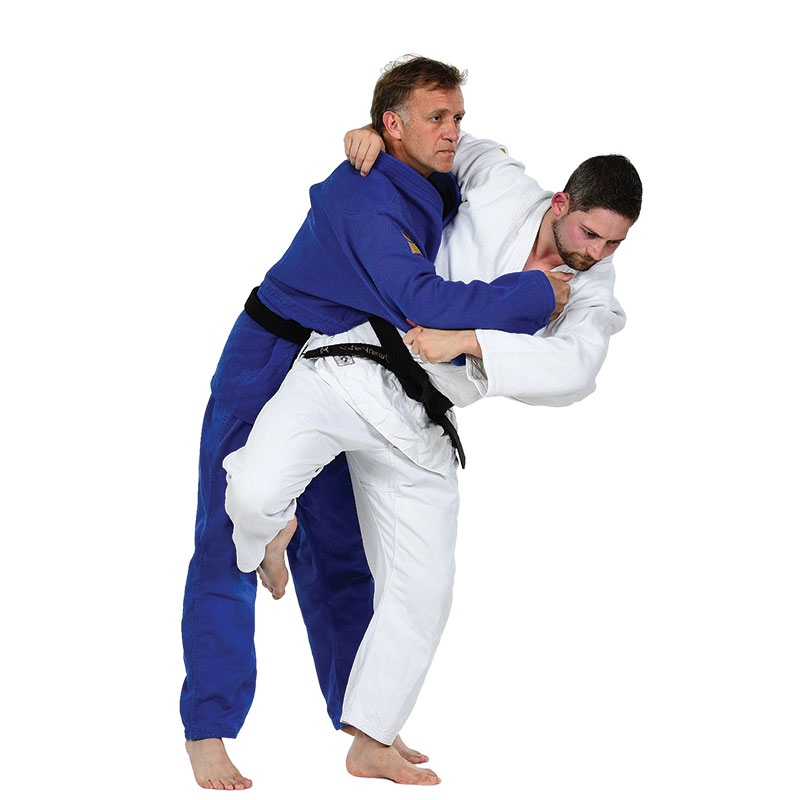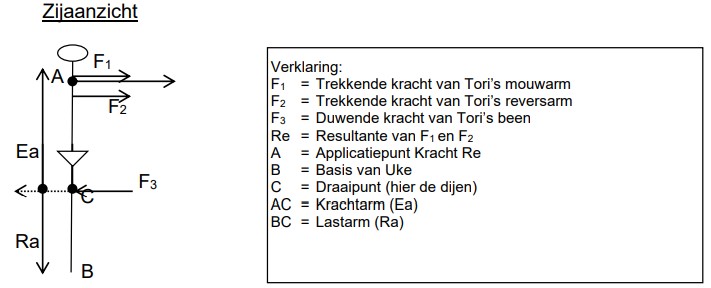Hane-goshi – 跳腰 – Springing Hip Throw
Classification: Nage-waza (throwing technique) – Koshi-waza (hip technique)
Difficulty: ★★★★☆
Kodokan-approved technique
Technical Description
Hane-goshi, or “Springing Hip Throw”, is a powerful hip throw where tori breaks uke’s balance forward or towards the front-right corner, pulls uke tightly against their right side, then throws them using a springing, upward motion of the right leg and hip.
Unlike Harai-goshi, where the leg sweeps straight through, Hane-goshi involves a springing action, with the knee bent and the leg driving upward against uke’s inner thigh or hip, launching them over in a curved arc.

Biomechanics of Hane-goshi
This technique is based on a combination of lever mechanics and a couple force (Re + F3):
-
Fulcrum (C): Tori’s hip blocks uke at the level of their belt knot, becoming the pivot point.
-
Leg Drive (F3): Tori’s bent leg springs upward, making contact with uke’s inner thigh or upper leg, adding lifting power.
-
Arm Action (Re): Both arms guide and pull uke over the fulcrum.
-
The result: a lifting-and-turning throw with dynamic height and rotational control.
This makes Hane-goshi one of the more aesthetic and athletic throws in the koshi-waza category.

Did You Know?
In international judo, it’s strictly forbidden to wear jewellery, watches, or to have loose hair during competition — for safety reasons.
However, even at the highest level, accidents happen. A remarkable example occurred during the 2019 Grand Slam in Baku in the -81kg class, during a match between Anri Egutidze (POR) and Robin Pacek (SWE).
As Egutidze executed a throw, his opponent’s necklace got tangled in his pants, forcing the match to be paused for an unexpected wardrobe malfunction. To date, this remains one of the most unusual stoppages in international judo history!